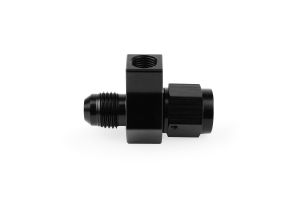Gents,
I'm a bit stumped on this one. At the dyno, i'm seeing a pressure drop when doing a WOT ramp run. Starting fuel pressure can be anything between 35-60psi but the 2-5psi drop is consistent at any given starting fuel pressure. For example, at a standing fuel pressure of 45psi by the time it reaches redline i'll be at 42psi.
It's not all that worrying but this shouldn't be happening.
Here's all the troubleshooting/fixes i've already done.
1. Changed the fuel pump twice. First time was on a Supra Denso. This lasted about 8 yrs but noticed this fuel pressure drop (as mentioned above) and swapped to an AEM 350 unit about 6 months and still seeing it.
2. Fuel filter is new OEM Honda
3. Fuel pressure regulator is a new AEM unit
4. Fuel lines after the fuel filter are all new but the feed and source lines which are hardly visible are still the stock ones from 30yrs ago. (I really need to change those asap)
5. I've rewired the Fuel pump to it's own dedicated 30 amp relay. The source 12V is coming from the engine bay fuse box. Not sure if that's a great spot to pull ~15amps from.
6. I'm using more efficient Bosch ignition coils so in theory overall current draw ought to be lower at WOT.
I'm stumped! I'm running out of things to change. I'm at a point were i'm starting to think the AEM pump and regulator are junk but the chances of that very low considering how new they are despite AEM parts being questionable these days to begin with.
WHAT I THINK IS GOING ON:
This is a super wild ass guess on my part. I think my fuel tank has some kind of venting problem. For example, when I release the fuel filler cap I get a loud pssssshwoooooooooooooosh as air rushes into the tank. Assumably, if the tank has a venting problem then it does not allow air volume to displace the fuel used at atmospheric pressure. Like sucking on a straw from a sealed cup.
My second assumption is one of the old lines at the gas tank somewhere is clogged.
Lastly, does anyone know if the two shutoff valves on each side of the tank aid in venting of any sort? The ones with the red hoses. It's my understanding those are shutoffs for if the car flips over. What about that circular round thingy on the driver most side of my tank below? Is the gas cap itself suppose to be a venting device as well? I see there is a large approx 1/2" black hose that appears to be the vent, but that could just be for overflow of the filler?

I'm a bit stumped on this one. At the dyno, i'm seeing a pressure drop when doing a WOT ramp run. Starting fuel pressure can be anything between 35-60psi but the 2-5psi drop is consistent at any given starting fuel pressure. For example, at a standing fuel pressure of 45psi by the time it reaches redline i'll be at 42psi.
It's not all that worrying but this shouldn't be happening.
Here's all the troubleshooting/fixes i've already done.
1. Changed the fuel pump twice. First time was on a Supra Denso. This lasted about 8 yrs but noticed this fuel pressure drop (as mentioned above) and swapped to an AEM 350 unit about 6 months and still seeing it.
2. Fuel filter is new OEM Honda
3. Fuel pressure regulator is a new AEM unit
4. Fuel lines after the fuel filter are all new but the feed and source lines which are hardly visible are still the stock ones from 30yrs ago. (I really need to change those asap)
5. I've rewired the Fuel pump to it's own dedicated 30 amp relay. The source 12V is coming from the engine bay fuse box. Not sure if that's a great spot to pull ~15amps from.
6. I'm using more efficient Bosch ignition coils so in theory overall current draw ought to be lower at WOT.
I'm stumped! I'm running out of things to change. I'm at a point were i'm starting to think the AEM pump and regulator are junk but the chances of that very low considering how new they are despite AEM parts being questionable these days to begin with.
WHAT I THINK IS GOING ON:
This is a super wild ass guess on my part. I think my fuel tank has some kind of venting problem. For example, when I release the fuel filler cap I get a loud pssssshwoooooooooooooosh as air rushes into the tank. Assumably, if the tank has a venting problem then it does not allow air volume to displace the fuel used at atmospheric pressure. Like sucking on a straw from a sealed cup.
My second assumption is one of the old lines at the gas tank somewhere is clogged.
Lastly, does anyone know if the two shutoff valves on each side of the tank aid in venting of any sort? The ones with the red hoses. It's my understanding those are shutoffs for if the car flips over. What about that circular round thingy on the driver most side of my tank below? Is the gas cap itself suppose to be a venting device as well? I see there is a large approx 1/2" black hose that appears to be the vent, but that could just be for overflow of the filler?












